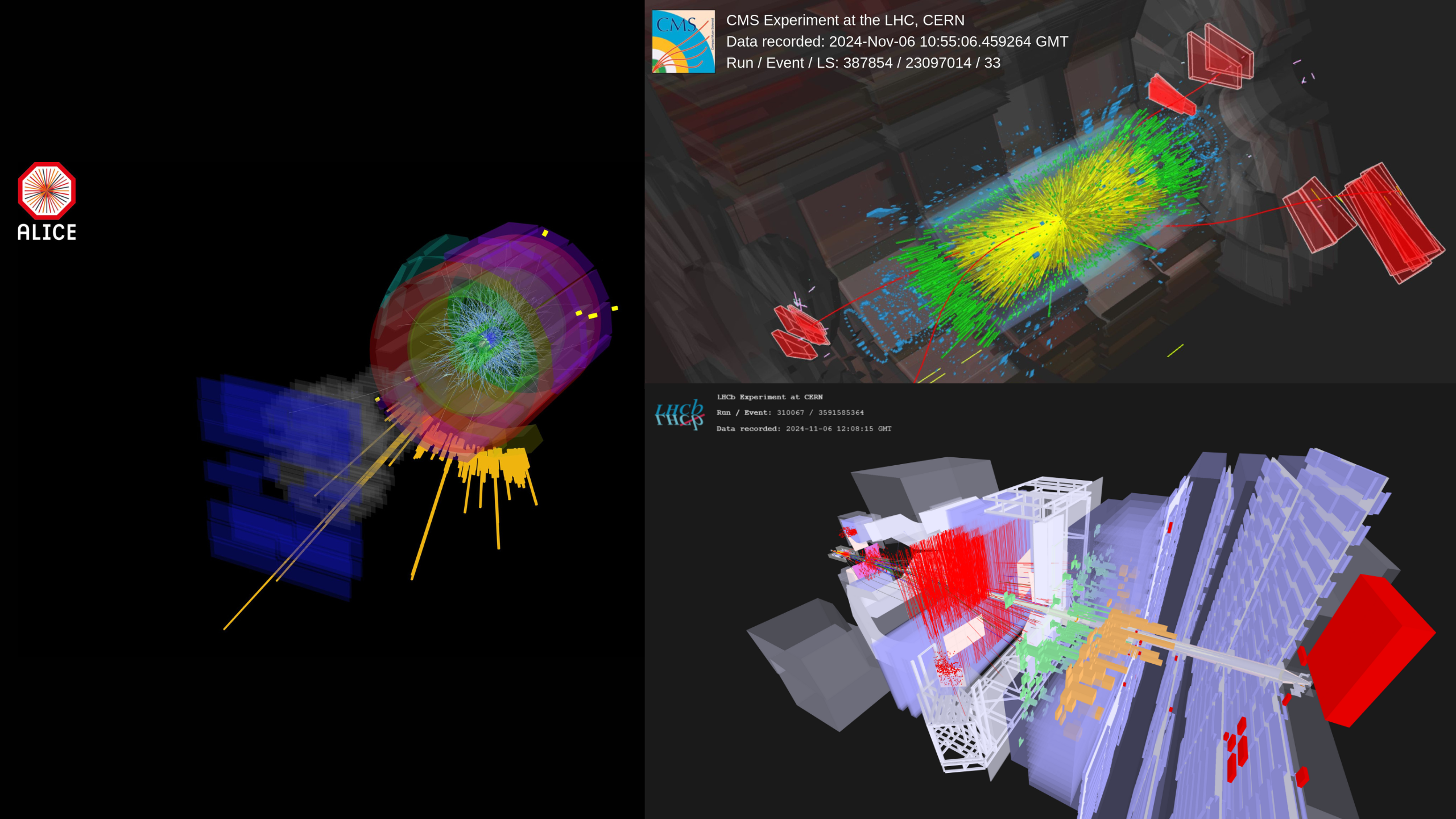
Event display showing a lead-lead collision in the ALICE, CMS and LHCb detectors.
The Large Hadron Collider (LHC) is like an immensely powerful kitchen, designed to cook up some of the rarest and hottest recipes in the Universe, like the quark-gluon plasma, a state of matter known to have existed shortly after the Big Bang. While the LHC mostly collides protons, once a year it collides heavy ions - such as lead nuclei - a key ingredient for preparing this primordial soup.
Today at 11.13 am, a new heavy-ion run began at the LHC, smashing together lead ions, containing 208 nucleons (82 protons and 126 neutrons), at an energy of 5.36 TeV per nucleon pair.
The LHC heavy-ion run will last almost three weeks, providing enough data for years' worth of work for physicists, who analyse this data to seek to understand the Universe's first moments.
Accelerator physicists at the CERN Control Centre are also gearing up to increase the machine's luminosity performance compared with last year.
"We aim to achieve at least 30% more collisions per day than in 2023," said Roderik Bruce, accelerator physicist and the LHC coordinator of the ion programme at CERN.
For this run, they have consolidated novel concepts that were introduced last year, such as crystal collimation and a new scheme to inject beams with shorter bunch spacing, making it possible to pack more lead ions in a beam for collisions that result in more physics data.
The ALICE experiment at CERN is dedicated to heavy-ion physics at the LHC. Its detector, specifically built for heavy-ion measurements, was upgraded during the last long shutdown to be able to collect and store many more collisions than before. The goal this year is to double the total sample collected in the ongoing LHC Run 3.
"We look forward to the large data sample from this run, which should allow us to get a first direct measurement of the temperature of the quark-gluon plasma and to study its other properties with unprecedented precision," said Marco van Leeuwen, the ALICE spokesperson.
The other LHC experiments have also modified their detectors and data-taking capacity to make the most of the ongoing heavy-ion run.
The CMS detector has increased its data-collecting speed from 20 gigabytes to 30 gigabytes per second. This means the CMS detector can now collect and study all the collision data instead of having to filter data during the heavy-ion run.
Similarly, the ATLAS detector is now fully adapted to new data acquisition systems, significantly enhancing its trigger for particle jets and leptons. It has also refined its trigger strategies for ultra-peripheral collisions, which occur when two heavy ions pass very close to each other but don't actually collide head-on, enabling studies of physics in extreme electromagnetic fields.
The LHCb detector will record lead-lead collision data with a 70% increase in instantaneous luminosity compared to last year, enabling it to collect a large data sample and study rare processes, such as the production of beauty hadrons, with high precision. As a new addition, this year LHCb will be able to inject neon and argon gases into its special SMOG2 system to collect lead-neon and lead-argon data alongside lead-lead collision data.
Studying the quark-gluon plasma reveals how the building blocks of matter emerged in the early Universe, just a hundredth of a billionth of a second after the Big Bang. The heavy-ion run is a unique opportunity at the LHC to study matter in its most extreme conditions.






